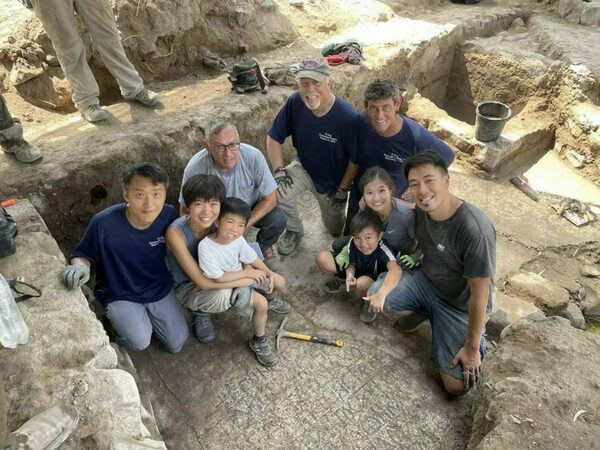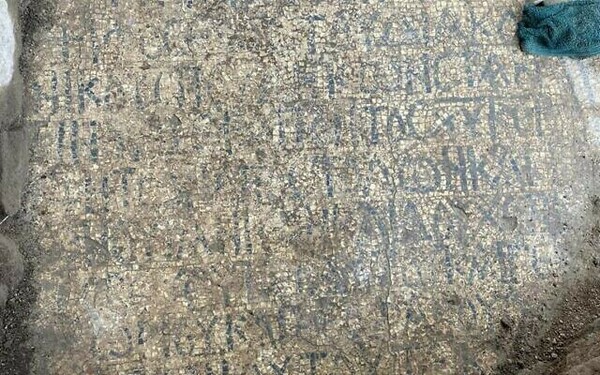
The discovery of a Byzantine mosaic bearing an inscription dedicated to Saint Peter reinforces the hypothesis that the archaeological site of el-Araj is indeed Bethsaida, the city of the three apostles, Peter, Andrew and Philip.
“I am restrained in what I can say about the results, but I will say that there will be a small earthquake in the Christian world. I could be mistaken, but I think the results will be seen as one of the most important discoveries for New Testament archaeology in this century,” Steven Notley, Academic Director of Excavations, announced in a suspenseful blog post dated August 8, the last day of the sixth excavation campaign at the site of el-Araj, located on the northern shore of Sea of Galilee.
A few days later, the discovery was made public: a large 1500 years old Greek inscription has been unearthed in the Byzantine basilica, which archaeologists from Kinneret College, in charge of excavations at the el-Araj site since 2014, call "the Church of the Apostles".
Following the Byzantine tradition of dedicatory mosaics, the inscription begins by naming the donor, a so called "Constantine, the servant of Christ" (not Constantine the Great), before proceeding to the thilling part: a request for intercession to the "chief and commander of the heavenly apostles ". A title “commonly used by Byzantine Christians to refer to the Apostle Peter,” clarifies the statement.

So framed by a round medallion made up of two lines of black tesserae, the inscription is part of a larger mosaic floor located in the diaconicon (namely a sacristy) of the church and decorated with floral patterns. “This discovery is our strongest indicator that the basilica had a special association with St. Peter, and it was likely dedicated to him. Since Byzantine Christian tradition routinely identified Peter and Andrew’s home in Bethsaida, it seems likely that the basilica commemorates their home,” explains Notley.
According to the hypotheses of archaeologists, the church could cover the remains of the house of Peter and Andrew, disciples of Jesus from Bethsaida, a city mentioned in the Bible, which has since been lost. "The Byzantine Christian tradition regularly identifies the house of Peter with Bethsaida, and not with Capernaum as is often thought today", continues Notley.
In the first century, Bethsaida was a small, unpretentious fishing port. It acquires the status of polis by the hand of Philip the Tetrarch, governor of the region in 30 AD and was named "Julias". The Gospel relates that in addition to having seen the birth of several of the disciples, Bethsaida witnessed the miracle of the healing of the blind man, before being condemned by Jesus for his lack of faith.
It is a certain St. Willibald, a Bavarian bishop on a pilgrimage to the Holy Land in the eighth century. who was the first to mention the existence of a church on the site built over the house of St. Peter and Andrew. While traveling from Capernaum to Kursi, he spent the night in a place he was told was Bethsaida, where Peter and Andrew came from. “There is now a church where their home used to be,” says his Hodoeporicon, Willibald’s itinerary in the Holy Land. For Notley, the discovery of the large Greek inscription “confirms the testimony of the eighth century Bishop Willibald, who visited the church, that Christianity in the Byzantine period commemorated the house of St. Peter at Bethsaida and not at Capernaum”.
Taken together, these finds continue to strengthen the identification of el-Araj with ancient Bethsaida, but do not constitute conclusive evidence as to the exact location of the house of Peter and Andrew. During the next excavation season in October, the archaeologists hope to find an inscription dedicated to Andrew.